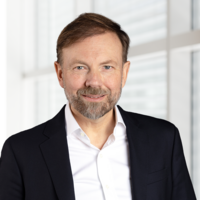The top five items on the World Economic Forum’s Global Risks Report 2020 are all environment related. In recognition of these risks, we have made it Oerlikon’s priority to manage and mitigate climate-related impacts across all lines of business.
We approach environmental sustainability from two distinct perspectives. First, we focus on helping our customers reduce their environmental footprints by providing them with innovative technology and solutions that drive efficiency, CO2 reduction and increased durability by extending useful product life. With consistent results recognized for enabling efficiency in multiple sectors, Oerlikon plays a role in reducing global emissions, preserving natural resources and minimizing waste streams.
Second, we undertake a rigorous approach to minimizing our own environmental footprint by reducing our CO2 emissions, energy and natural resource usage and the waste generated from our operations and across our supply chain.
Sustainable Innovation
At Oerlikon, everything we do is focused on advancing that standard of sustainable innovation.
With the world’s population projected to reach 10.9 billion by 2100 and the global middle class continuing to grow, there is increased demand for goods to be transported to more consumers. Demand for mobility is also on the rise and is driving higher rates of car and air travel.
As a leading global technology company, we must push the current limits on the extent to which technology can be used to facilitate the demand for affordable and clean energy, ensure sustainable consumption and production patterns, implement industry innovation and infrastructure and take action to combat climate change and its impacts.
For the environment, we are focused on United Nations SDGs 7, 9, 12 and 13. They are an excellent fit in terms of what Oerlikon does to meet customers’ needs, achieve business growth and contribute to the good of the planet. Our areas of R&D focus, our business model and our revenue streams all align with those SDGs — and, in fact, were aligned with those environmental targets even before they were identified as SDG priorities.
The interaction of automation and digital processes will ensure more sustainable Industry 4.0 production solutions for the manufacture of Manmade Fibers and their production machines and systems.
Georg Stausberg
CEO Manmade Fibers Division
With a portfolio of solutions and services that encompasses surface engineering, advanced materials and fiber production, we engineer materials and processes that contribute to a more sustainable planet. Our work promotes greater efficiency in energy consumption; longer lives for textiles, equipment and tools to reduce waste and overdependence on recycling; and reductions in C02 emissions. Take for example our DiscCover coating solution: authorities worldwide have introduced stringent limits for exhaust emissions — including NOX, CO2 and particulate matter. Increasingly, regulators are turning their attention to fine dust emissions from brake wear. On average, 31% of passenger- vehicle-related emissions are caused by brake wear. This results in more than 90 000 metric tons of fine dust per year in the OECD countries alone. The DiscCover solutions from Oerlikon Balzers and Oerlikon Metco significantly reduce fine dust from brake discs so that our customers are equipped to comply with stricter regulations as they improve their environmental footprint.
The impact of our development of sustainable innovation extends beyond reducing our customers’ carbon footprints to enhancing the performance of their machinery, equipment and production systems. This enables them to achieve savings in cost as well as in energy and resource use and to minimize waste generation. Oerlikon’s mission is to create such next-generation solutions to resolve our customers’ problems.
We achieve this by making continuous investments in R&D that lead to commercialization of groundbreaking products and services. In this way, we amplify our leadership in delivering expertise and results to a broad spectrum of industries and affirm our customers’ confidence in our team.
The research and engineering strategy that drives our innovation pipeline focuses on three priorities: customer needs, market potential and environmental concerns. In 2020, we invested 5.2% of our revenue (CHF 118 million) in R&D and filed 98 new patents. With a team of more than 1 100 engineers
and scientists dedicated to converting ideas into inventions, we are in constant pursuit of new applications and enhancements to existing solutions, always with the target of delivering higher productivity, lower operating costs and greater results in sustainability performance — and often in collaboration with our customers. Our 2030 target is that 100% of our R&D investment in new products must cover the ESG criteria.
Our passion for pushing the boundaries of what is possible further manifests itself in our early exploration (and, when appropriate, adoption) of tools and technologies that are emerging as new assets in the launch of sustainable solutions. These include big data (seen, for example, in our capacity for rapid alloy development that significantly speeds up invention and commercialization), additive manufacturing (an increasingly valuable tool in the development of, for example, engine parts that are lighter, stronger and more energy-efficient), artificial intelligence and Industry-4.0-caliber digitization and automation. These all figure prominently in our R&D pipeline and our aim is to master their requirements so that we can fully exploit their potential as it develops.
With that in mind, we have incorporated our spirit of innovation into the expansion of our network of collaborators and partners in science and academia. This is a natural extension of our tradition of collaboration with customers. In recent years, we have established and fostered the growth of a global network of alliances and joint ventures with universities, research institutions and industry experts.
Our goals for the next decades are to continue assessing all new innovations for their sustainability impact and include sustainability KPIs. For further details about Oerlikon’s innovative solutions, please refer to Oerlikon’s Annual Report 2020.
